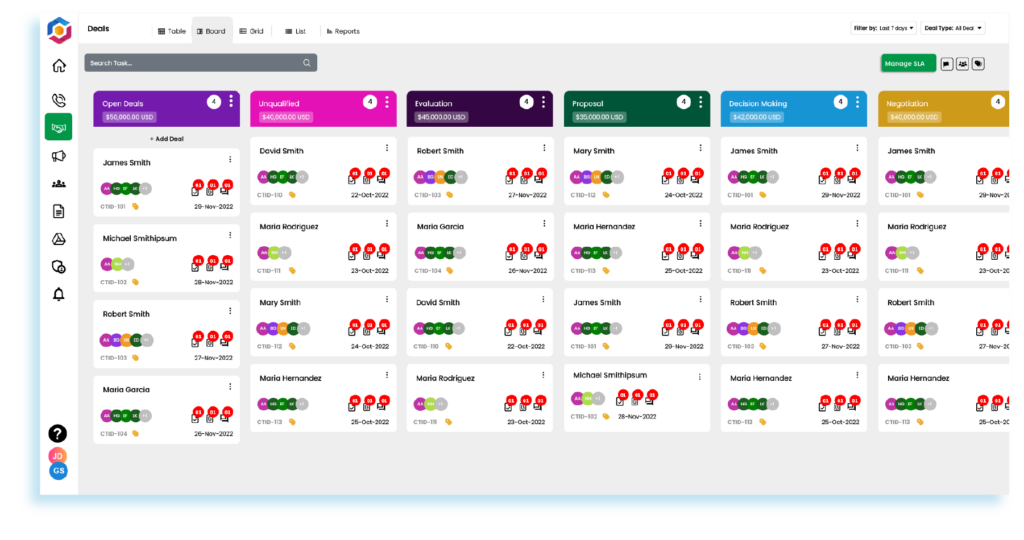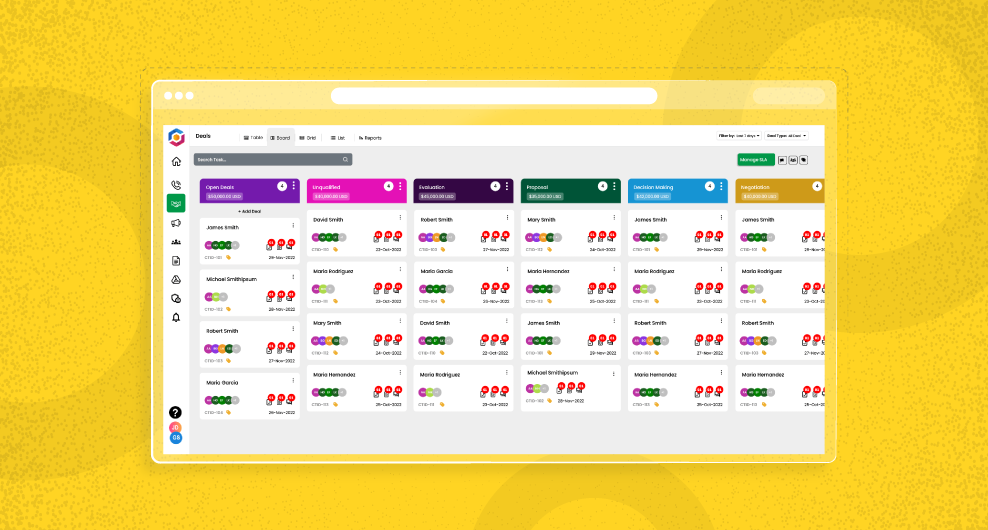Table of Contents
What is Inbound vs Outbound Sales?
Inbound and outbound sales are two different methods of selling products or services. Inbound sales are a strategy that focuses on attracting customers to your business through content marketing, social media, search engine optimization, and other online channels. Outbound sales management involve actively reaching out to potential customers through cold-calling, emails, direct mailers, and other traditional methods.
The in-out marketing strategy combines both inbound and outbound sales tactics to maximize the chances of success. This approach helps businesses by creating a comprehensive approach that takes into account the customer’s needs as well as the company’s goals. By using this strategy, businesses can ensure that they are targeting their ideal customers while also maximizing their ROI with CRM software.
The Pros & Cons of Inbound & Outbound Sales
Inbound and outbound sales are two different approaches to selling. Inbound sales focus on creating relationships with customers, while outbound sales is about reaching out to potential customers. Both approaches have their own advantages and disadvantages, which should be taken into consideration when deciding which method to use for a particular business.
In this article, we will discuss the pros and cons of inbound and outbound sales methods. We will look at the advantages of inbound sales such as cost savings, increased customer engagement, better lead quality, etc., and the disadvantages of outbound selling such as time-consuming prospecting processes, lack of personalization, etc. We will also explore how both methods can be used together to maximize results using CRM software.

Exploring the Benefits of Inbound Sales
Inbound sales are a powerful lead generation strategy that can help businesses increase their customer base and revenue. It involves creating content that attracts potential customers to your website, engaging them with relevant content, and then converting them into paying customers.
Inbound sales can be used to generate leads through various channels, such as social media, search engine optimization (SEO), email marketing, and other digital marketing strategies. With an effective inbound sales funnel, businesses can create an automated system for generating leads and nurturing them until they become paying customers.
How to Successfully Execute an Outbound Sales Strategy?
Outbound sales strategies are becoming increasingly popular in today’s competitive market. With the help of outbound sales, companies can reach more potential customers and increase their chances of success. However, it is important to understand how to successfully execute an outbound sales strategy in order to maximize its potential.

Here, we will discuss the key components of a successful outbound sales strategy such as cold calling strategies, telemarketing solutions and direct mail campaigns. The sales team increased their reach and engagement through strategic outbound calling campaigns, connecting with potential clients and fostering valuable relationships. We will also provide tips on how to create an effective outbound sales funnel and measure the success of your efforts. By following these guidelines, you can ensure that your outbound sales efforts lead to increased ROI and customer experience and satisfaction.
When Should You Use Inbound or Outbound Sales Approaches?
Cold calling has been a popular sales technique for decades, but it’s not without its drawbacks. Cold calling requires a lot of time and effort to reach potential customers, and often results in low conversion rates. It can also be difficult to track the success of cold calls, as there is no way to measure how many people actually hang up on you. Additionally, cold callers often have difficulty connecting with their target audience due to cultural differences or language barriers. For these reasons, businesses should carefully consider when cold calling is the best sales approach before investing time and money into this type of outreach.
Tips for Sales Reps
Inbound sales are the process of attracting potential customers to your business through various marketing strategies such as content marketing, SEO, and social media. The goal of inbound sales is to educate and inform potential customers about your products or services, and to build trust and credibility with them. This leads to them reaching out to your business when they are ready to make a purchase.
Sales automation tools, such as CRM software, can be used to streamline both inbound and outbound sales processes. These tools can help sales teams manage and organize their contacts, track the status of leads, and automate repetitive tasks such as sending follow-up emails.
Lead nurturing is an important aspect of both inbound and outbound sales. It involves building relationships with potential customers over time by providing them with valuable information and resources. Lead management is another important aspect of sales, which involves tracking and categorizing leads based on their level of engagement and readiness to buy.

Email marketing is a popular method of lead nurturing and lead management. It can be used to send targeted messages to specific groups of leads, as well as to automate follow-up emails.
The sales funnel is a visual representation of the stages a lead goes through before becoming a customer. It typically includes stages such as awareness, interest, consideration, and decision. Marketing automation can be used to automate tasks such as sending targeted messages to leads at different stages of the sales funnel.
Cold emails are a popular method of outbound sales. They are used to reach out to potential customers who have not expressed interest in your products or services. Cold emails are often used to generate leads or to introduce a new product or service.

Conclusion
In conclusion, inbound sales are a more passive approach to sales where you attract potential customers, outbound sales are more proactive approach where sales team actively reach out to potential customers through cold calling, emailing, lead nurturing, lead management, email marketing, sales funnel, marketing automation, and cold emails. All these methodologies play an important role in both inbound and outbound sales and can be automated using sales automation tools like CRM software.




